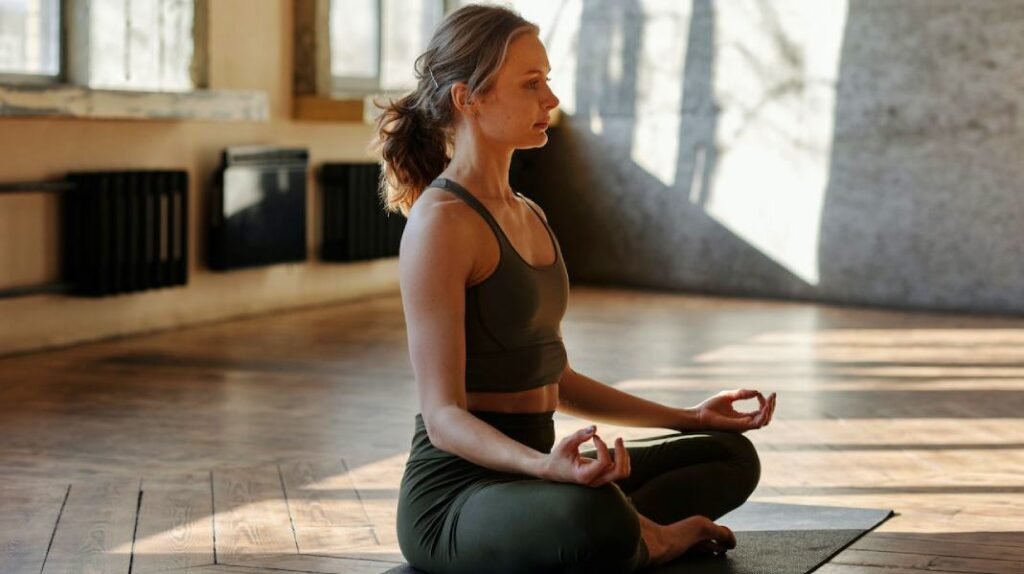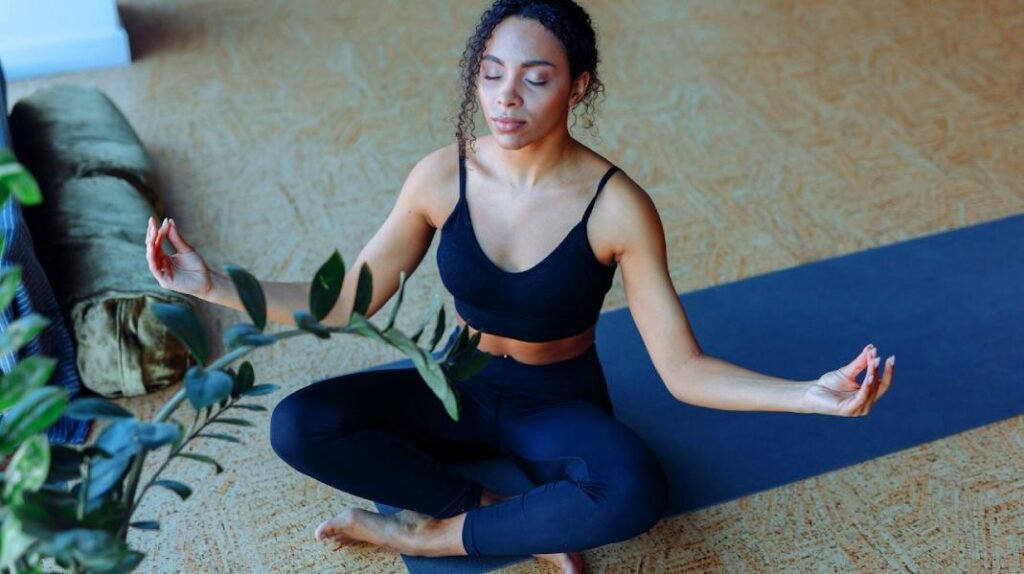Imagine a world where you can find inner peace, achieve clarity of mind, and experience profound relaxation whenever you need it. With Benson Meditation Techniques, this becomes a reality. Developed by Dr. Herbert Benson, a pioneer in mind-body medicine, thetechniques are a powerful tool to combat stress and anxiety. By focusing your breath and repeating a simple word or phrase, you can tap into the calmness within you and step away from the chaos of everyday life. Join us on a journey of self-discovery as we explore the transformative power of Benson Meditation Techniques.

1. What are Benson Meditation Techniques?
1.1 Definition
Benson Meditation Techniques, also known as the Benson Meditation Method, were developed by Dr. Herbert Benson, a renowned cardiologist and pioneer in mind-body medicine. These techniques are a form of relaxation response training that aim to elicit the body’s natural relaxation response, counteract the effects of stress, and promote overall well-being.
1.2 Background
Dr. Benson’s research showed that the relaxation response, which is the opposite of the stress response, can be activated through various mental and physical practices. He found that practicing these techniques regularly could have profound effects on people’s health, reducing anxiety and stress-related symptoms, improving sleep, and enhancing overall quality of life.
1.3 Benefits
The benefits of Benson Meditation Techniques are numerous and diverse. Regular practice of these techniques has been associated with reduced stress levels, increased relaxation, improved mood, and enhanced overall mental and physical well-being. Additionally, research has shown that these techniques can help lower blood pressure, improve cardiovascular health, boost immune system function, and even promote healthy aging.
2. How to Practice Benson Meditation Techniques
2.1 Preparation
Before you begin practicing Benson Meditation Techniques, it’s important to create a conducive environment that supports relaxation and focus. Find a quiet space where you won’t be easily distracted, and gather any props or materials you may need, such as a comfortable cushion or chair.
2.2 Find a Quiet Space
Choose a location where you can practice Benson Meditation without interruptions or distractions. This could be a dedicated meditation room, a quiet corner of your home, or even a peaceful outdoor setting. The key is to create an environment that promotes a sense of calm and tranquility.
2.3 Choose a Comfortable Position
Select a comfortable position for your meditation practice. This could be sitting cross-legged on the floor, sitting on a cushion, or even sitting in a chair with your feet firmly planted on the ground. It’s important to choose a position that allows you to relax and maintain good posture throughout your practice.
2.4 Set a Timer
To ensure that you have a dedicated and uninterrupted meditation session, it’s helpful to set a timer. Choose a duration that suits your schedule and meditation experience level. Beginners may start with just a few minutes and gradually increase the duration as they become more comfortable with the practice.
2.5 Close Your Eyes
Once you’re settled in your chosen position, gently close your eyes. Closing your eyes helps reduce external distractions and allows you to turn your focus inward so you can get the most out of the Benson Meditation Techniques.
2.6 Focus on Your Breathing
Benson Meditation Techniques often involve focusing on the breath as a way to anchor your attention and calm the mind. Begin by taking a few deep breaths, and then allow your breath to return to its natural rhythm. Direct your attention to the sensation of the breath entering and leaving your body. If your mind starts to wander, gently bring your focus back to the breath.
2.7 Use a Mantra
A mantra is a word, phrase, or sound that is repeated during meditation to help maintain focus and reduce mental chatter. In Benson Meditation Techniques, you can choose a simple word or phrase to silently repeat to yourself throughout your practice. This can be something like “peace,” “relax,” or “let go.” Use the mantra as a gentle anchor to help bring your attention back whenever your mind starts to wander.
2.8 Progressively Relax the Body
To deepen relaxation and release tension from your body, practice progressive muscle relaxation. Start by focusing your attention on one part of your body, such as your feet, and consciously relax the muscles in that area. Gradually work your way up, systematically relaxing each body part until you reach the top of your head. This technique can help you achieve a state of deep relaxation and release physical tension.
2.9 Let Go of Thoughts
During your meditation practice, it’s common for thoughts to arise. Instead of engaging with these thoughts or trying to push them away, simply observe them without judgment and let them go. Acknowledge the thoughts and gently bring your focus back to your breath, your mantra, or the present moment.
2.10 Return to the Present Moment
As you continue your meditation practice, you may find your mind wandering or becoming distracted. Whenever you notice this happening, gently guide your attention back to the present moment. Focus on your breath, the sensations in your body, or the sounds around you. Cultivate a sense of curiosity and non-judgment as you explore the present moment with heightened awareness.
2.11 End the Session
When your designated meditation time is up, gently bring your attention back to the room. Take a few deep breaths, slowly open your eyes, and allow yourself a moment to transition back to your regular activities. Reflect on the experience and notice any effects it may have had on your mind and body.
3. Exploring Different Techniques within Benson Meditation
3.1 Body Scan Meditation
Body Scan Meditation is a technique that involves systematically bringing awareness to each part of your body, from head to toe. As you focus your attention on each body part, you can observe any sensations or areas of tension, and consciously relax and release them. Body Scan Meditation is particularly effective for promoting relaxation, stress reduction, and body awareness.
3.2 Loving-Kindness Meditation
Loving-Kindness Meditation, also known as Metta Meditation, involves cultivating feelings of love, kindness, and compassion towards yourself and others. This practice typically begins with directing loving-kindness towards oneself, then expanding to loved ones, acquaintances, and eventually to all sentient beings. Loving-Kindness Meditation is a powerful technique for cultivating positive emotions, reducing negative feelings such as anger and resentment, and fostering connection and empathy.
3.3 Visualization Meditation
Visualization Meditation utilizes the power of the mind’s eye to evoke specific mental images. By visualizing peaceful scenes, places, or experiences, you can create a sense of calm and relaxation. Visualization Meditation can enhance focus, imagination, and creativity, providing a unique way to engage with your meditation practice.
3.4 Walking Meditation
Walking Meditation is a form of meditation that encourages mindfulness and awareness while walking. It involves focusing on the sensation of each step, the movement of the body, and the environment around you. This technique can be practiced indoors or outdoors and is an excellent way to integrate mindfulness into daily activities, increase physical activity, and connect with nature.
3.5 Transcendental Meditation
Transcendental Meditation (TM) is a technique that involves silently repeating a specific mantra to effortlessly transcend normal thinking and access a state of deep relaxation and inner awareness. TM is typically taught by certified instructors and involves personalized mantras. It has been extensively researched and has shown promising results in reducing stress, anxiety, and promoting overall well-being.
4. Common Challenges and How to Overcome Them
4.1 Difficulty in Focusing
One common challenge when practicing Benson Meditation Techniques, or in meditation, is difficulty in maintaining focus. To overcome this, start with shorter meditation sessions and gradually increase the duration as your focus improves. You can also experiment with different techniques, like using a mantra or visualizing an object, to anchor your attention. Remember to be patient and gentle with yourself throughout the process.
4.2 Restlessness
Restlessness can arise when the mind is unsettled or agitated. If you find yourself feeling restless during meditation, try incorporating gentle movement or stretching before your practice to release excess energy. You can also experiment with walking meditation or engaging in a physical activity like yoga or Qi Gong to help calm the mind and body before sitting for meditation.
4.3 Falling Asleep
Falling asleep during meditation can occur if you’re feeling sleep-deprived or practicing at a time when you’re naturally more tired. To prevent falling asleep, try meditating in an upright position, keeping your spine straight and avoiding lying down or using overly comfortable positions. You can also adjust the timing of your meditation to a time when you feel more alert and awake.
4.4 Overcoming Thoughts and Emotions
It’s common for thoughts and emotions to arise during meditation. Instead of trying to suppress or control them, practice observing them with a sense of acceptance and non-judgment. Recognize that thoughts and emotions are natural and part of the human experience. Redirect your attention back to your chosen anchor, such as your breath or mantra, whenever you notice your mind wandering.

5. Frequently Asked Questions (FAQs)
5.1 What is the optimal duration for Benson Meditation?
The optimal duration for Benson Meditation can vary depending on personal preference and availability. Starting with just a few minutes of daily practice can be beneficial, and gradually increasing the duration to 20-30 minutes is commonly recommended. However, even shorter meditation sessions can provide benefits, so it’s important to find a duration that is realistic and sustainable for you.
5.2 Can Benson Meditation be practiced by beginners?
Absolutely! Benson Meditation Techniques are accessible and suitable for beginners. The simplicity of these techniques makes them highly approachable for anyone interested in starting a meditation practice. With regular practice and patience, beginners can gradually develop their ability to focus, relax, and experience the many benefits of meditation.
5.3 How often should Benson Meditation be practiced?
Consistency is key in meditation practice. Aim to practice Benson Meditation Techniques daily or as frequently as possible. Starting with shorter sessions and gradually increasing the frequency and duration can help make meditation a sustainable habit. Remember, even a few minutes of practice each day can make a positive impact on your well-being.
5.4 Can Benson Meditation help with stress and anxiety?
Yes, Benson Meditation Techniques have been scientifically proven to help reduce stress and anxiety. By activating the body’s relaxation response, these techniques counteract the physiological and psychological effects of stress. Regular practice can lead to increased resilience, improved emotional well-being, and a greater ability to manage and cope with stress and anxiety.
5.5 Are there any potential risks or side effects associated with Benson Meditation?
Benson Meditation Techniques are generally safe and well-tolerated by most individuals. However, it’s important to be aware of potential challenges that may arise during practice, such as feelings of frustration, restlessness, or difficulty in maintaining focus. If you have any pre-existing medical or mental health conditions, it’s advisable to consult with a healthcare professional before starting any new meditation practice.

